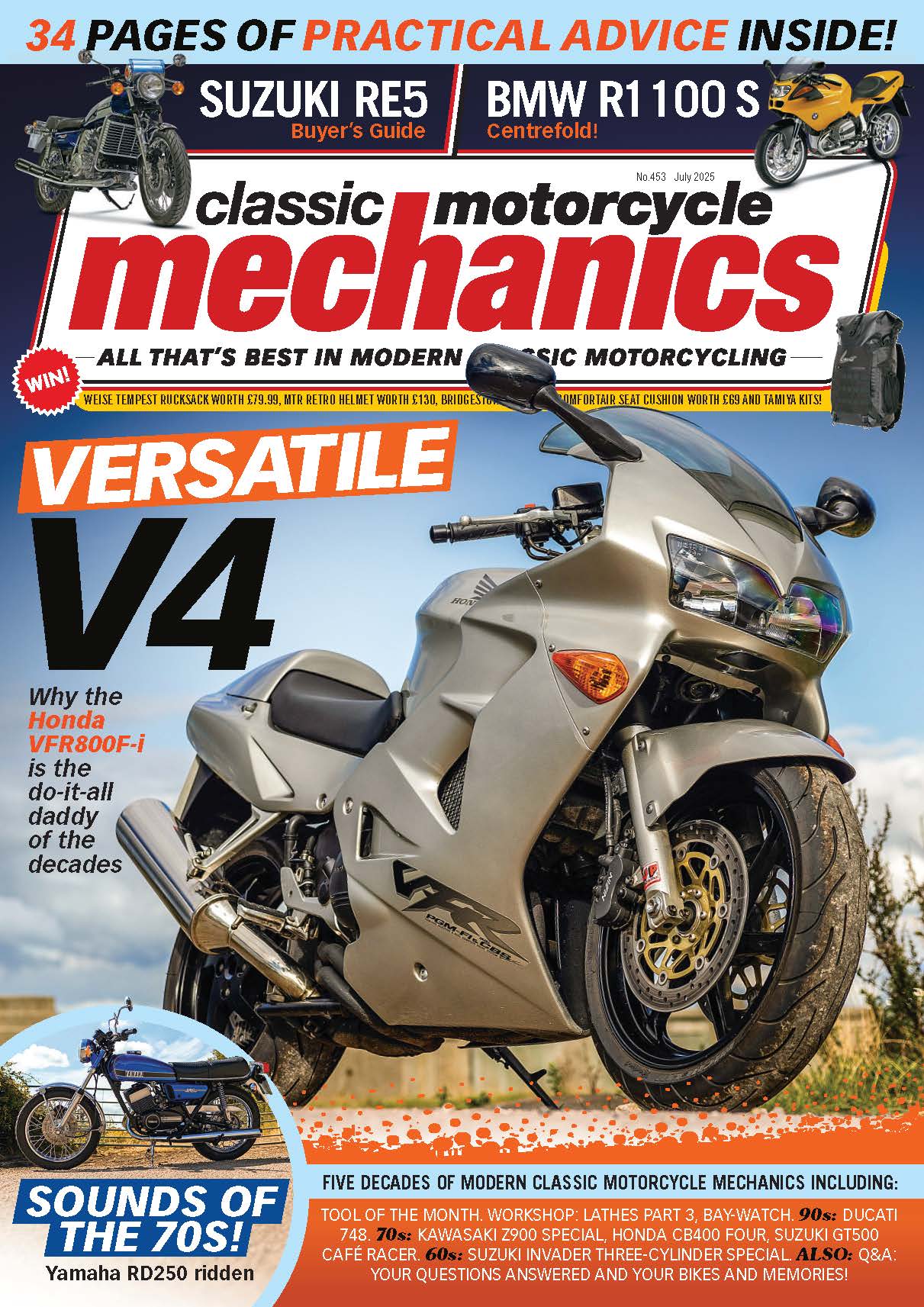The sunny side of the classic world, with the VJMC’s Steve Cooper

Most of us would be fairly happy to go on record stating Japanese motorcycles are generally reliable give or take the odd the foible or designer’s blind spot – Honda owners please feel free to shout ‘cam-chains’ at this juncture!
Despite what the detractors and haters might say, machines from Japan were, are, and remain, if not perfect, then at the very least, dependable.
There are two good reasons for this. Firstly, the Japanese engineers and designers had to ensure in the early days that the products they offered were better than those of the opposition. In America that meant devoid of earth-shaking vibrations from antediluvian V-twins and all that implied. For anything British the key areas were oil tightness and electrics. The second reason was the Far Eastern obsession with a loss of face – something the Japanese culture takes both very personally and extremely seriously.
With that all firmly established it was effectively a done deal that the various machines offered by the Asian factories would be as smooth as silk, devoid of leaks and steadfastly, unerringly, consistent. In fact, the British press of the day was almost flabbergasted that the Honda CB92 Benly had a six-volt electric starter that still worked perfectly well even in the depths of a 1960s British winter.
Rightness of design allied to strict levels of quality control generally ensured the absence of the fabled UK factories’ infamous Friday afternoon jobs. And yet, on occasion, the odd rogue one did get through – my own Yamaha RD350B was a perfect example. Fitted with what we now refer to as high-top carburettors, these bikes could suffer from the throttles sticking on in wet weather. The angle of the cable guides allied to the outer material’s ability to suck in moisture saw the outer pinching the inner with resultant mayhem – revised cables and guides were very swiftly flown to Europe!
Some Japanese bikes simply have issues attributable to misfortune or bad luck. When stripping down my long-term Suzuki Stinger pre-restoration I was amazed to find nigh on five inches of oily road dirt on the bottom of the motor. Assuming, as you do, that it was a leaking sump washer, the project ploughed on ahead: 1000 miles into its rebirth the Stinger still weeps gear oil – the only logical conclusion being it must have a slightly porous sump casting. Who knew, etc.?
Despite the odd, inherent, issues such as 1980s Suzuki idiosyncratic wiring issues; Kawasaki’s instantly-corroding alloys of the same vintage; Honda’s 1990s regulator/rectifiers strategically buried away from any air-flow; or Yamaha’s use of recycled 1970s’ Fiats to make Powervalve fuel tanks, we’ve actually got a much better deal than the generations before… and hooray for that!
www.vjmc.com ❙ 01454 501310




